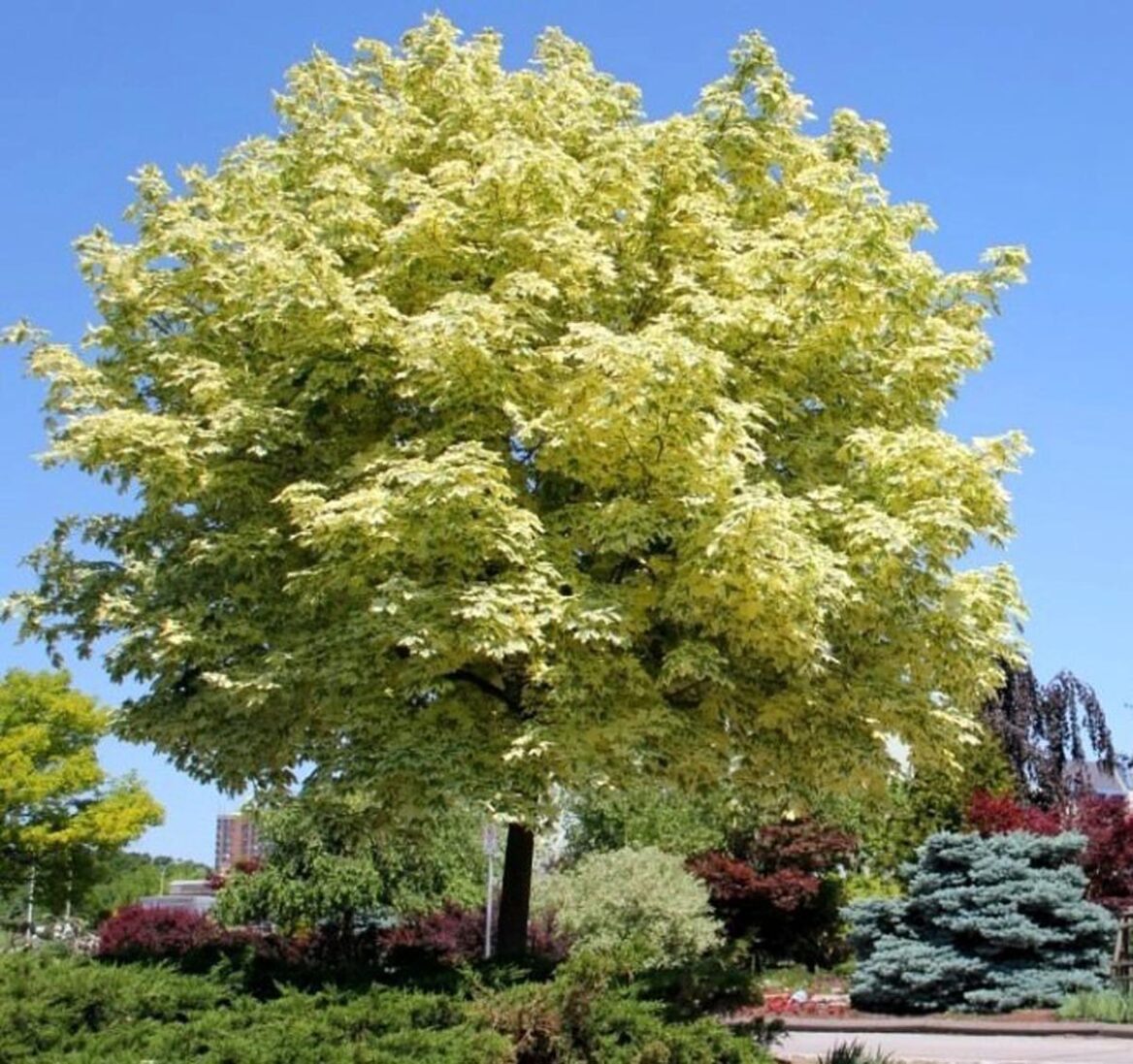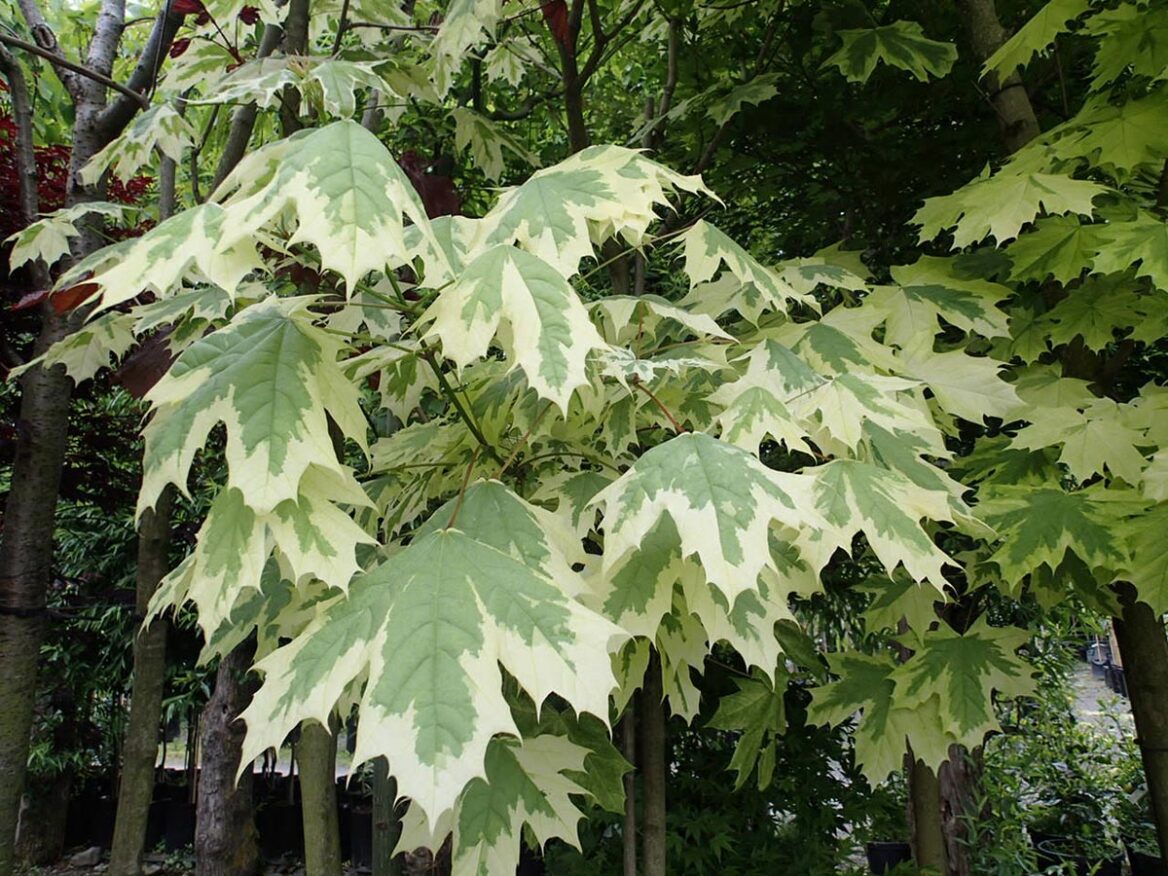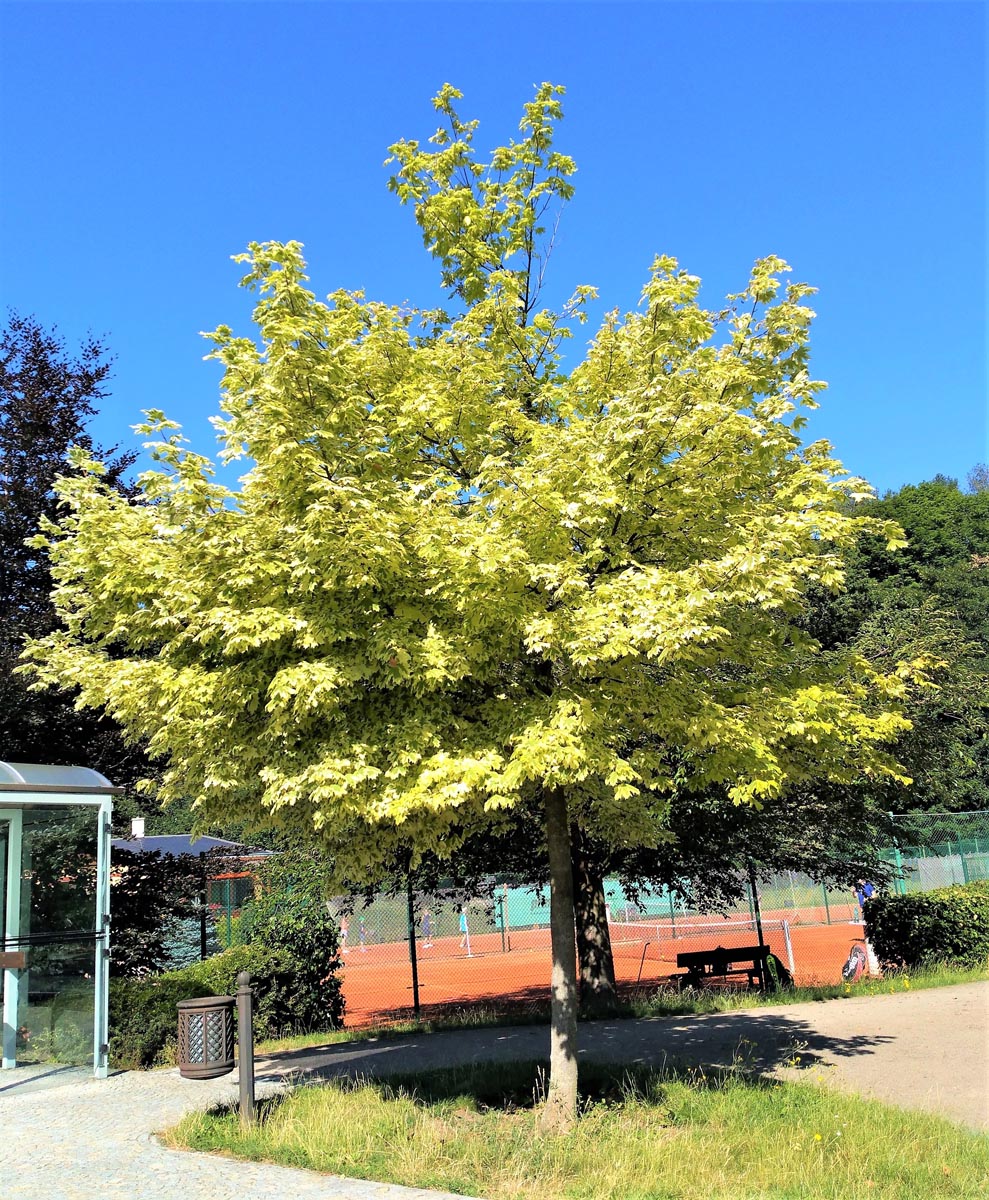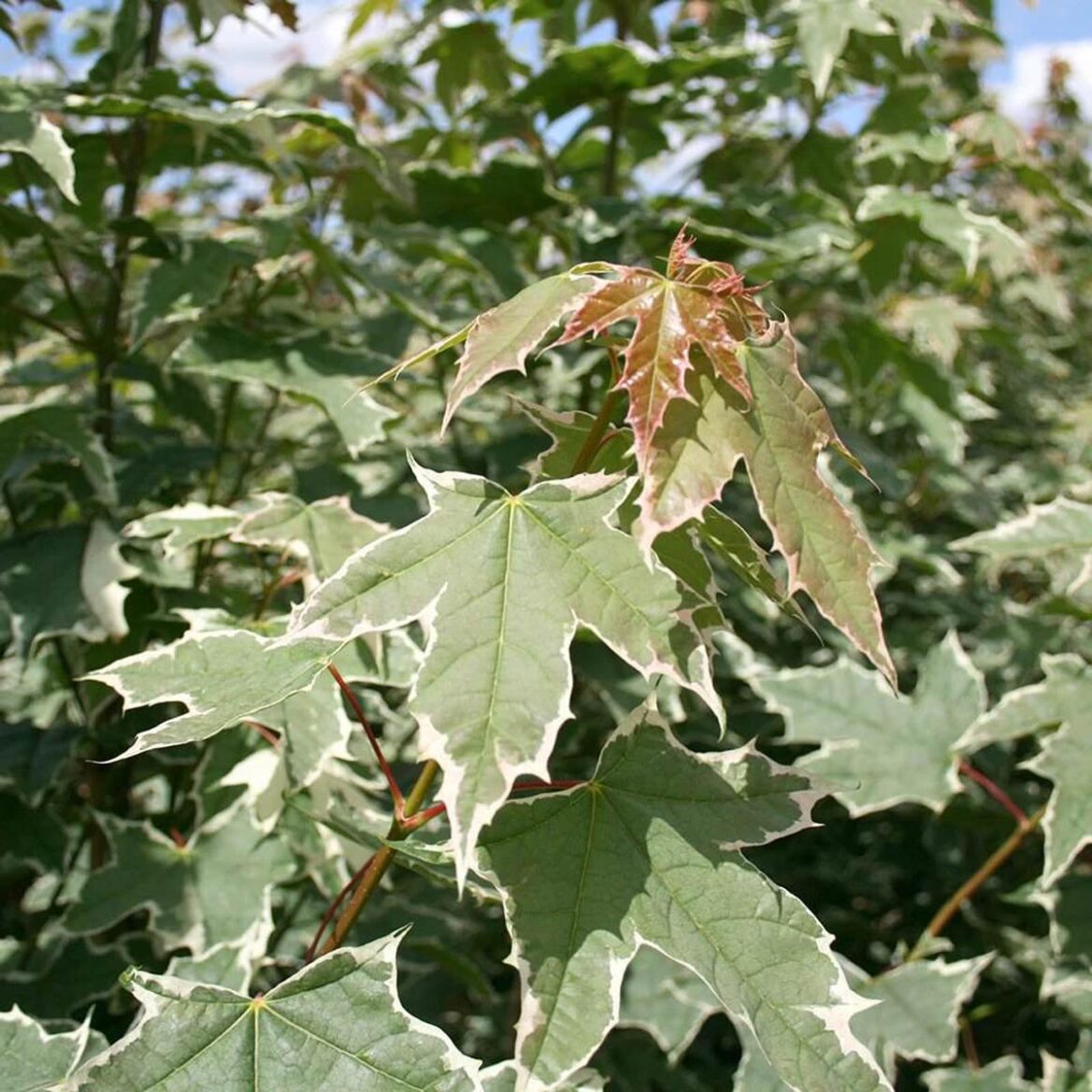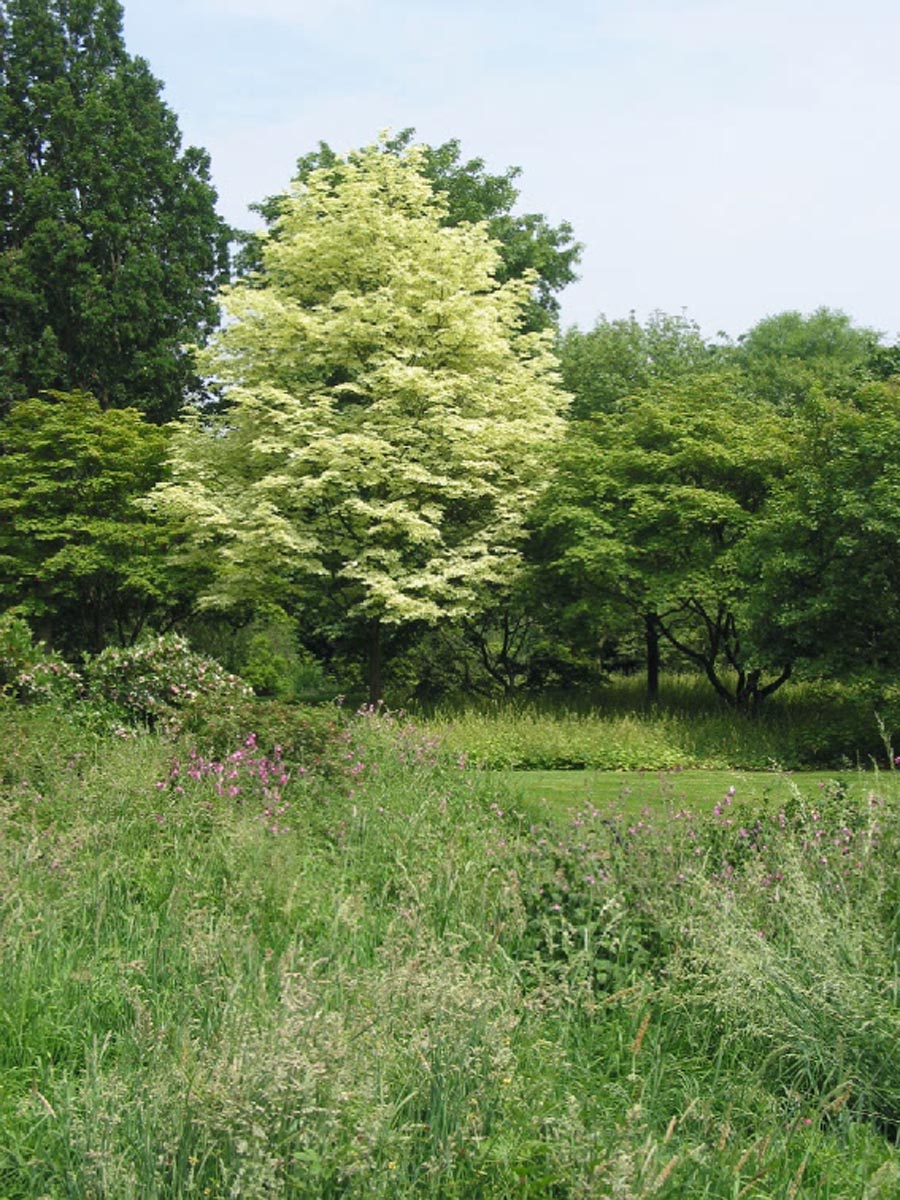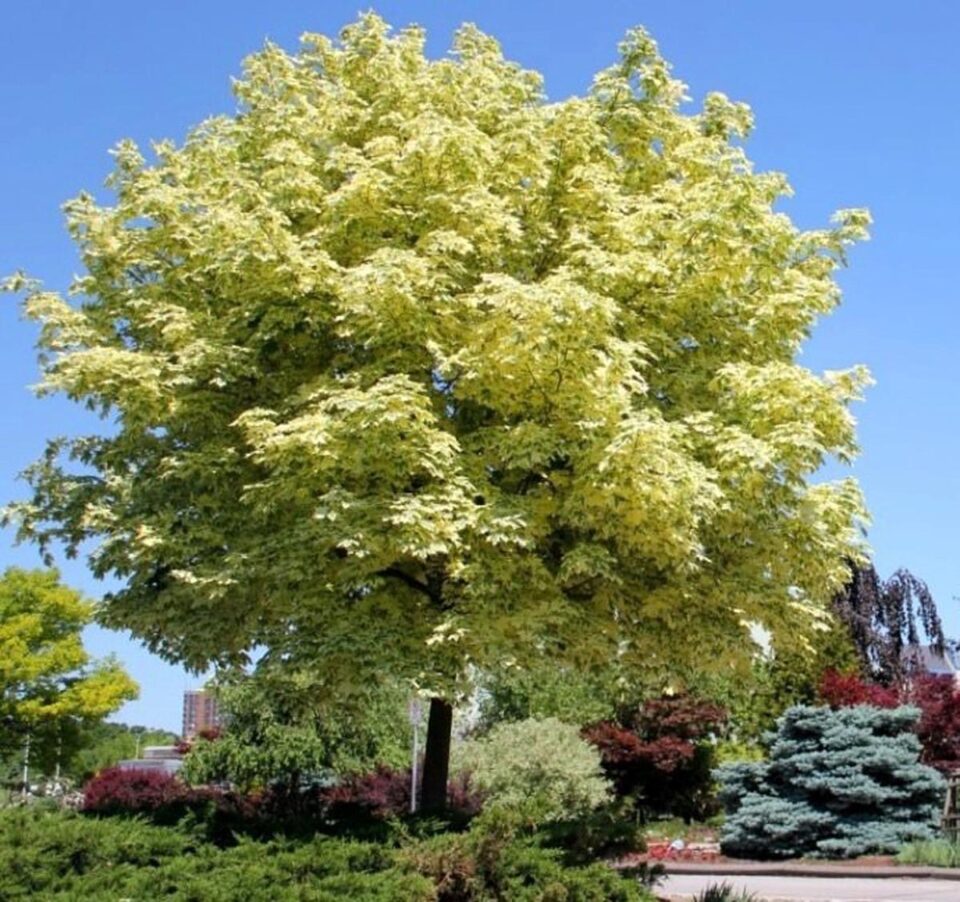Acer platanoides ‘Drummondii’
Norway Maple
Acer platanoides ‘Drummondii’ boasts exquisite cream-green leaves during spring and summer, which then transform into a yellow or orange color during autumn. While its shallow root system has the potential to disrupt sidewalks and driveways, Acer platanoides ‘Drummondii’ can withstand air pollution and can be conveniently transplanted. It flourishes in soil that is both damp and well-drained, but it can also adapt to dry locations that undergo intermittent drought and wet sites that experience occasional flooding. Acer platanoides is deciduous and native to eastern and central Europe and western Asia. Learn more about Acer platanoides. Acer platanoides ‘Drummondii’ was introduced before 1903 by Messrs Drummond of Stirling, Scotland and was described by Fritz Graf von Schwerin (1856 – 1934) in 1910.
Other common name(s): Harlequin Maple
Synonyms: Acer platanoides 'Variegatum', Acer platanoides 'Harlequin', Acer platanoides 'Silver Variegated', Acer platanoides 'Argentea Variegata'
$650.00
Deciduous
Height: 8.0m
Width:
6.0m
Estimated 10 year height and width
Acer platanoides ‘Drummondii’ stock information
Full Stocklist| Grade | Height | Standard | Available | I/P | Qty / Price |
|---|
